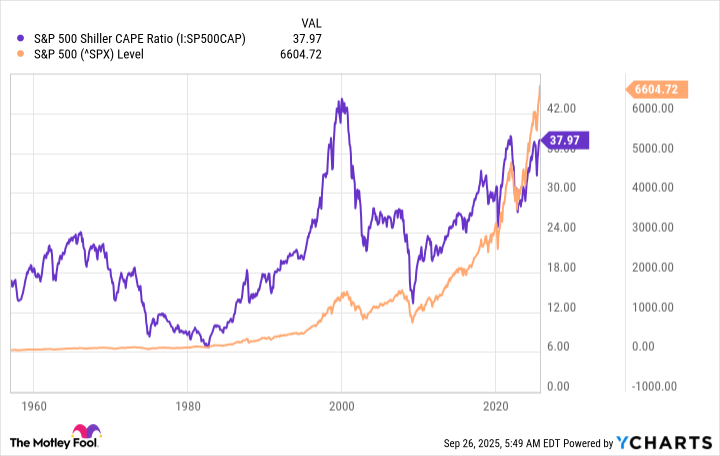
Let’s talk about the S&P 500 for a second, shall we? The darling of Wall Street. The index that makes investors feel all warm and fuzzy inside when it’s soaring, and icy cold when it takes a dive. Earlier this year, it was a bit of a rollercoaster. Investors, bless their hearts, were biting their nails over Donald Trump’s import tariffs. The thought of them messing with the economy sent the markets into a little bit of a tizzy.
Then, President Trump decided to show some flexibility, which calmed everyone down. Investors, ever hopeful, turned their attention to earnings reports, and lo and behold, most companies reported strong results. There was also talk of potential interest rate cuts, which, let’s be honest, always sounds like a good thing to the market. Lower rates mean cheaper debt, and cheaper debt means everyone gets to keep their champagne flowing, right?
And just like that, the market shot up, fueled by tech stocks. Nvidia and Palantir Technologies are two companies that immediately spring to mind, zooming ahead like they were equipped with jetpacks. It was all sunshine and rainbows until, well, the Fed entered the room.
The Fed’s Latest Moves
Enter Jerome Powell, the Federal Reserve chair, with a big, shiny warning for Wall Street. The Fed had been cutting interest rates for months now. The first cut came last September, and the next one followed in September of this year. And then, surprise! Powell announced that there might be two more cuts coming before the year is over. The market liked this. Who wouldn’t?
Lower interest rates are, after all, a market’s best friend. They lower borrowing costs, which helps companies who need debt to run operations. Individuals with mortgages? They get a bit of a break too. Everyone wins, right? Well, sort of.
Here’s the thing: Powell, in his typically straightforward manner, dropped a bombshell. He said, and I quote, “Equity prices are fairly highly valued.” Well, well, well. The cat’s out of the bag. Sure, he added that we’re not in a “time of elevated financial stability risks,” but the message was loud and clear: the stock market is a bit expensive right now.
The S&P 500 Shiller CAPE Ratio
If you’re wondering what exactly Powell meant by “fairly highly valued,” let’s take a look at the S&P 500 Shiller CAPE ratio. It’s a handy little number that adjusts stock prices for inflation and compares them to earnings over the past ten years. Recently, this ratio has been hovering around 37. Now, you might think, “Okay, 37. What’s the big deal?” Well, it’s only reached that level twice before in the history of the S&P 500 index. Just two other times since the 1950s!
So, what happens when the ratio gets this high? History gives us a clear answer: the S&P 500 typically declines. Sometimes it’s a short correction; other times, it’s a prolonged slump. Either way, we’re looking at a pattern that suggests things are overpriced, and some kind of pullback is on the horizon.

Historically speaking, when stocks get this high, they tend to correct themselves. So, if you’re looking at your portfolio, clutching it tightly to your chest and wondering if it’s about to fall off a cliff-take a deep breath. It’s not the first time this has happened, and it won’t be the last.
The Silver Lining
Now, before you rush off to sell everything and buy a small island, let’s pause and consider a few silver linings. First, no one knows exactly when a pullback will happen. It could be tomorrow, or it could be next year. It could be brief, and it might not even be as dramatic as we think. So, no need to panic just yet.
Second-and here’s the real gem-whenever this next correction comes (and it will come), it will eventually be followed by a recovery. And if history is anything to go by, that recovery will push the S&P 500 to new record highs. Yes, even after major downturns and crashes, the market has a remarkable ability to bounce back. So, breathe easy, long-term investors. This too shall pass, and when it does, your investments will likely come out on the other side better for it.
In conclusion: Keep calm, stay diversified, and remember that the market’s rollercoaster ride is a long one. Maybe this time it’s a bit too steep for comfort, but it won’t stay that way forever. 😊
Read More
- Child Stars Who’ve Completely Vanished from the Public Eye
- VOO vs. VOOG: A Tale of Two ETFs
- Crypto’s Broken Heart: Why ADA Falls While Midnight Rises 🚀
- Bitcoin’s Big Bet: Will It Crash or Soar? 🚀💥
- The Sleigh Bell’s Whisper: Stock Market Omens for 2026
- The Best Romance Anime of 2025
- Bitcoin Guy in the Slammer?! 😲
- The Biggest Box Office Hits of 2025
- Crypto Chaos: Hacks, Heists & Headlines! 😱
- Actresses Who Frequently Work With Their Partners
2025-09-27 21:39